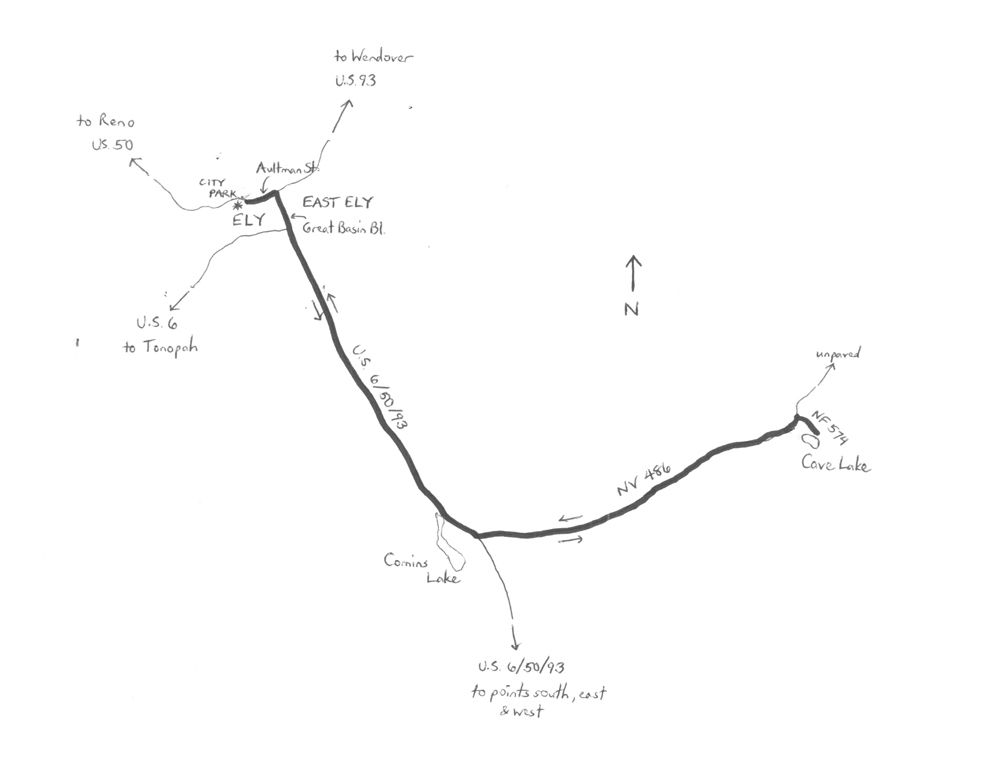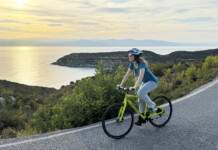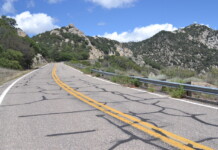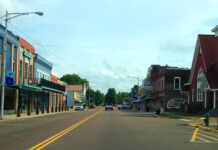While Nevada in the summertime may generate images of extreme desert heat, the state actually contains some 50 mountain ranges, offering relief from the heat at higher altitudes. The city of Ely is situated at an elevation of 6,437 feet in Nevada’s Egan Range, in the east central part of the state. Ely had a population of just over 4,000 in 2016, about the same as it did in 1940. One source claims that Ely’s population peaked at 12,000 in the late 1950s, during the economic boom years of copper mining. That population may have included Ely’s satellite towns of Ruth, McGill and East Ely, though. Official census data shows Ely’s population as nearly flat for over seven decades. Ely was established during the 1850s as a stagecoach station along the Pony Express route. The transcontinental railroad and telegraph both came later, passing through this area. Still later came the Lincoln Highway, the U.S.’s first transcontinental highway.

The highway morphed into U.S. 50. Today, three U.S. routes – 6, 50 and 93 – pass through town. Copper mining activities all but ceased in the late 1970s, and unemployment spiked at about 25%. The town’s economy was boosted, however, with the conversion of the old Nevada Northern Railway into the “Ghost Train of Old Ely,” as well as the designation of U.S. 50 as the “Loneliest Road in America.” Later, copper mining returned, in the mid-2000s, in response to an increase in demand. Today, copper concentrate is mined here, transported by rail to Seattle, and then shipped to Japan for smelting!
Ely gets seasonal snowfall; the accumulation was up to two feet during 2010’s heavy winter. Summertime highs may reach the upper 80s. As for the ride, the Ely to Cave Lake Express (the name recognizes Ely’s tie to the Pony Express) is a 32.5-mile trip, from the town’s center to Cave Lake State Park and back. There are no challenging climbs along the route, but there is a net elevation gain of just over 900 feet on the outbound ride. Start at Ely’s city park (elevation 6,419 feet), located in the heart of the town’s historic district, on U.S. 50 (Aultman Street). From 10th Street, turn right and head eastward on Aultman, which is a 30 mph, 4-lane road with wide shoulders through here. Note that, to the left on U.S. 50, in the opposite direction, is the Hotel Nevada, once the tallest building in the State, and still a bustling casino. Also, the Bristlecone Convention Center has a display of “Prometheus,” a local bristlecone pine tree that was cut down in 1964, and was later determined to be the oldest living thing on Earth, at about 4,900 years. Perhaps there was no way to confirm this without cutting the tree down (Editor’s Note: This can be done with a core sample that doesn’t kill the tree).
Back on Aultman, the road descends slightly before climbing to a junction with U.S. 93 (Great Basin Boulevard). Turn right here, continuing the gradual climb, and head south. There is some retail along this road. After the next major junction (U.S. 6), you are now on the outskirts of town, heading south on triply-signed U.S. 6, 50 and 93. The highway narrows to two lanes as development becomes sparse. The highway has a forgiving profile, from 6,537 feet at U.S. 6 (mile 1.55) to 6,600 feet, and then to 6,553 feet at the next point of interest, Comins Lake (mile 7.65). In between, much to the chagrin of most cyclists, the highway features rumble strips along the outer edges of the highway. With the shoulder varying in width – sometimes essentially disappearing – there are segments along which there is no choice but to ride slightly in the roadway. Fortunately, author Deke Castleman claims that U.S. 93 is “even lonelier” than U.S. 50, so there should not be many motor vehicles out here. As for Comins Lake, it will be on the right, covers about 400 acres, and is accessible to the public. The lake was originally stocked with trout and bass, but northern pike were, somehow, illegally introduced to the waters about 15 to 20 years ago. The trout have since disappeared, and the bass have nearly “crashed,” while the pike have flourished.
Less than one mile later, at mile 8.45, turn left onto Nevada Route (NV) 486. This is the main road to Cave Lake. It is a gradual climb from U.S. 6/ 50/ 93 (elevation 6,631 feet) to mile 13 (7,135 feet), where the road begins to curve and descend slightly. The gradual climb continues, though, as the road nears the lake, entering Humboldt-Toiyabe National Forest. Steep slopes along the sides of the road, as you enter The Narrows, increase the drama of the approach to the lake. You cannot see the lake from NV 486, though, as the road enters the Schell Creek Range. Just before NV 486’s pavement ends, turn right onto National Forest Route 574 (mile 14.9). From here, it is a short climb (6% grade) to the main park entrance, and the edge of Cave Lake (elevation 7,307 feet). You can view the lake without officially entering the park. It is an exquisite setting, with clear waters backed by steep slopes. The lake is small, at 32 acres. While Comins Lake has lost its trout, Cave Lake has plenty of them. During the winter, the lake features ice fishing. Take some time to enjoy the scene before starting the return ride to Ely. The return ride is the reverse of the outbound ride. Once back in Ely, be sure to take in some of the town’s historical sites and attractions, and its great outdoor artwork. Also, in September, Ely would be hosting “Race the Rails,” in which mountain and road bikes go head-to-head against the “ghost” train mentioned above. The road course is substantially different from the one described in this article.
Starting point coordinates: 39.248736oN 114.887708oW
For more rides, see Road Biking Utah (Falcon Guides), written by avid cyclist Wayne Cottrell. Road Biking Utah features descriptions of 40 road bike rides in Utah. The ride lengths range from 14 to 106 miles, and the book’s coverage is statewide: from Wendover to Vernal, and from Bear Lake to St. George to Bluff. Each ride description features information about the suggested start-finish location, length, mileposts, terrain, traffic conditions and, most importantly, sights. The text is rich in detail about each route, including history, folklore, flora, fauna and, of course, scenery.
Wayne Cottrell is a former Utah resident who conducted extensive research while living here – and even after moving – to develop the content for the book.









